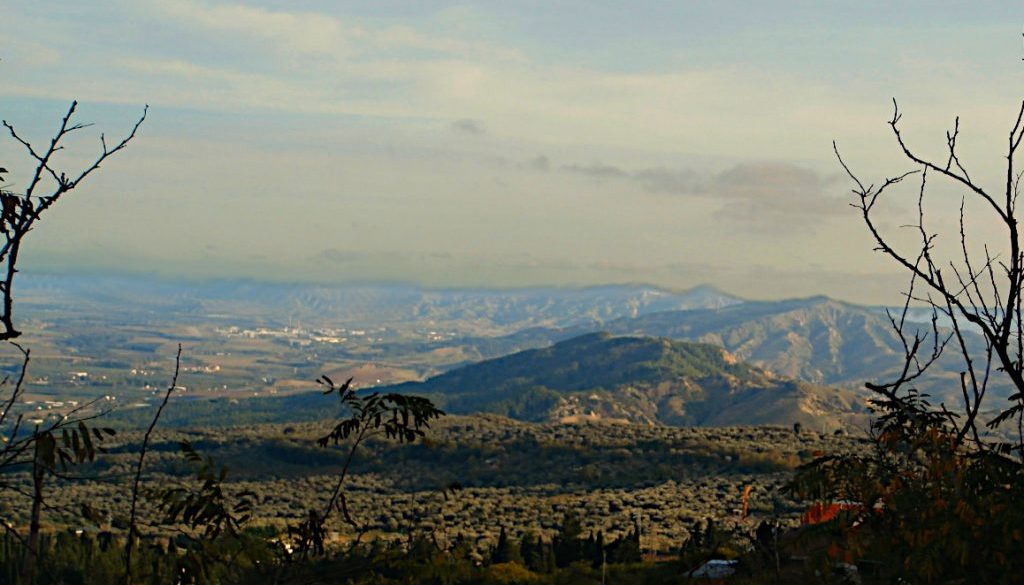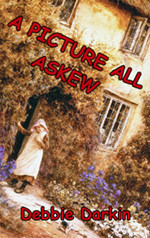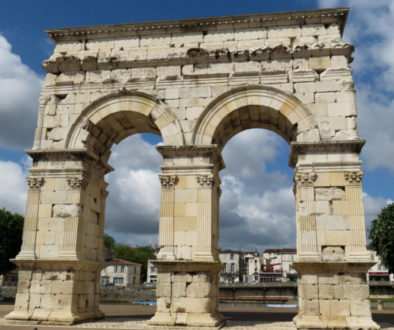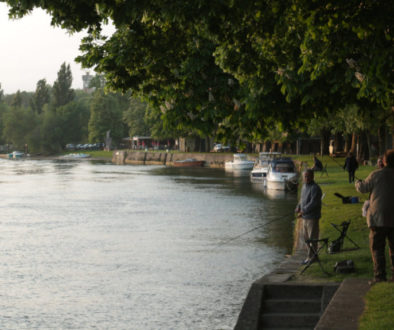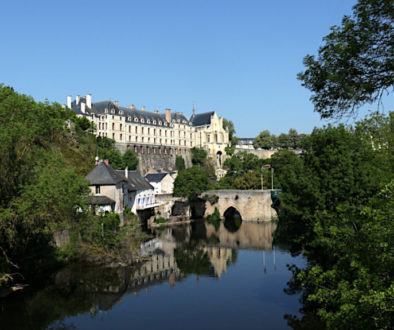FERRANDINA – CITY OF VULTURES AND BANDITS
27th October
FERRANDINA – CITY OF VULTURES AND BANDITS
Carlo Levi described Ferrandina as a hangout for vultures and bandits. That was in 1936, when he was taken there as a political prisoner. Presumably still so in 1947 when ‘Christ Stopped at Eboli’, his book on the area, was published in English.
FERRANDINA – FIRST PASS THE FLATS
He described the town as standing high on a wooded bluff. It sounded interesting, and we were not disappointed when we visited. That is, once we had passed the blocks of flats that dominated the road until you reached the top of the sprawling modern town. At first it seemed like we would not be able to access the hilltop citta istorica at all.
FERRANDINA – WE RISK A HEFTY FINE
Suddenly there was a Zona Traffico Limitato sign (click here for info). The only car park was just beyond it and across the road, behind an old building. We took the chance of a hefty fine and crossed the few yards over, but the small space was full. We retraced down and looked for another way up, but without luck.
FERRANDINA – A TRUDGE UP AN ENDLESS HILL
Finally, we had to park at the bottom of the town. I took my stick and Airomir atomiser, and with the help of Graham’s arm, I tackled the long, steep slope to the old top town.
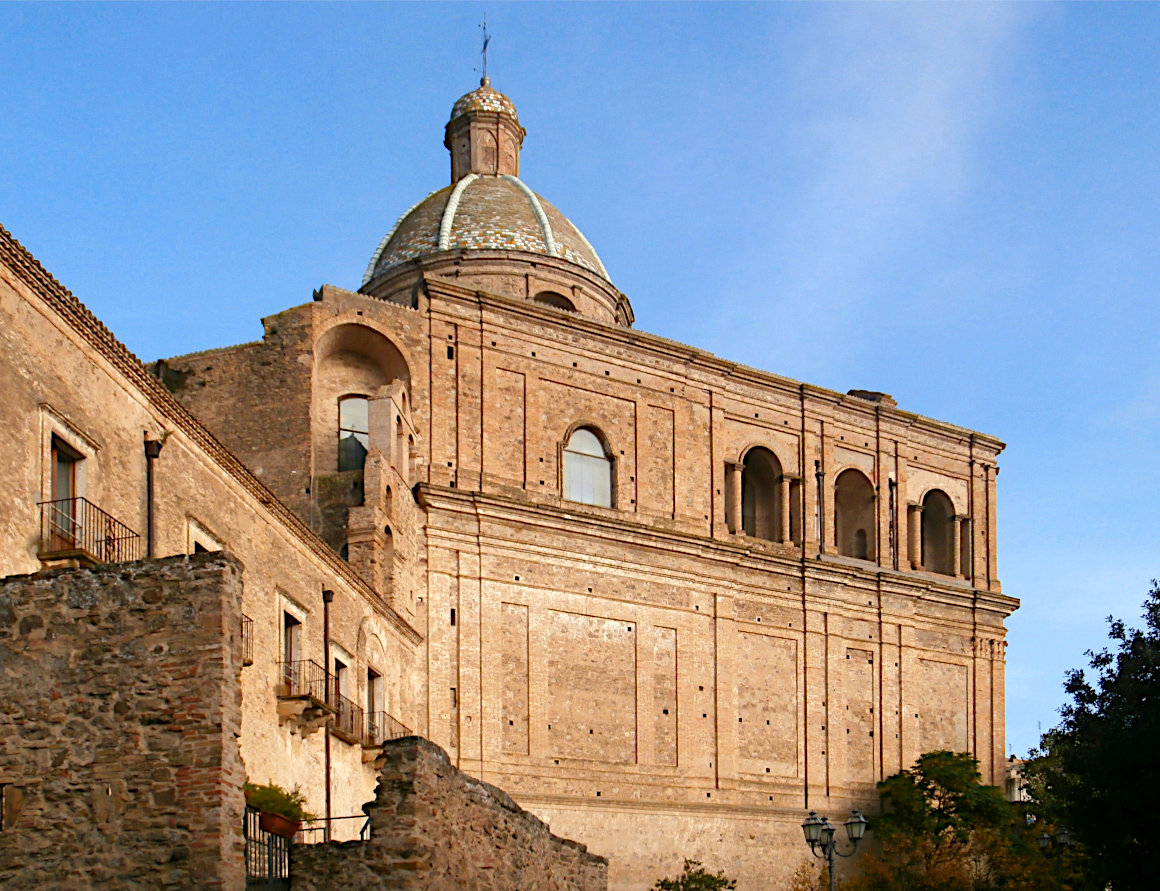
FERRANDINA – FOOTBALL IN A TINY YARD
I am happy to report that the climb was worth it. We passed some intriguing little shops, including a Gelato, which also sold kaffé and little cakes. Gratefully, I could sit and finish an ice cream while recovering breath for the rest of the climb. When we commented to the proprietor about the length of the steep hill, he clucked through his teeth in exasperation.
“Those kids again,” he said. “They think it funny to turn the sign around. It should point to a very small, private back street. Sir – you can bring your car up here and park just at the top there.” He took Graham to the doorway and pointed. When we complemented him on his English, he said he had worked in London and some of the home counties for some years. He was very courteous and suggested places to look out for. Graham walked down and fetched our car, then we thanked him and made our farewells.
Soon we reached a very small central square, passing schoolboys playing football in a small concrete yard next to an old seminary.
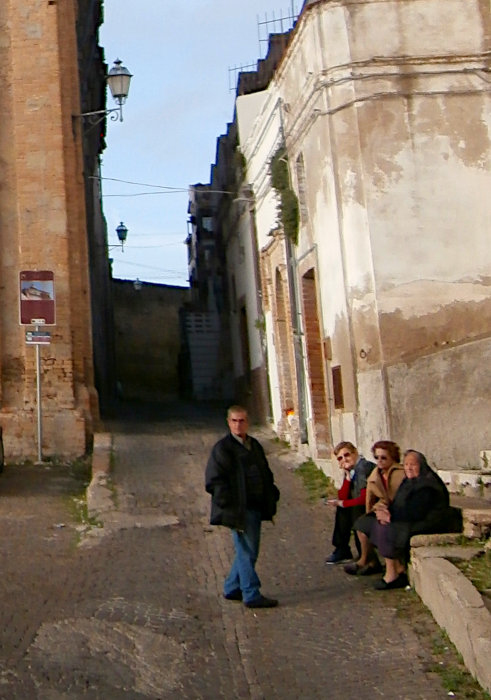
FERRANDINA – WE ARE SCRUTINISED BY LOCAL MORALITY-MATRONS
Just above it stood the modest Duomo, which appeared closed. Some older women, stockinged and robed all in dark clothes, their heads covered (as you still often see in the far south of Italy), sat on the steps of a nearby cottage, knitting and chatting. They all stopped to stare long and hard at us.
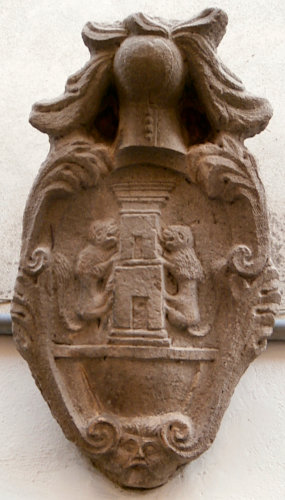
We passed through an arch into a narrow, tiled street of what had once been quite grand houses. One had the sign ‘Palazzo’ above it. Graham took many photos.
At the end, we passed out onto steps leading down to a spacious ‘promenade’. This stretched almost right round the town. It gave onto impressive, far views. There was no old stone wall, as in other hilltop towns. Thankfully, it was girded by a railing.
FERRANDINA – MY SILENT CONVERSATION
We discovered that we were indeed on the top of the old City Wall. (We were amazed at how incredibly high it had been built all those centuries ago, when later we viewed it from below).
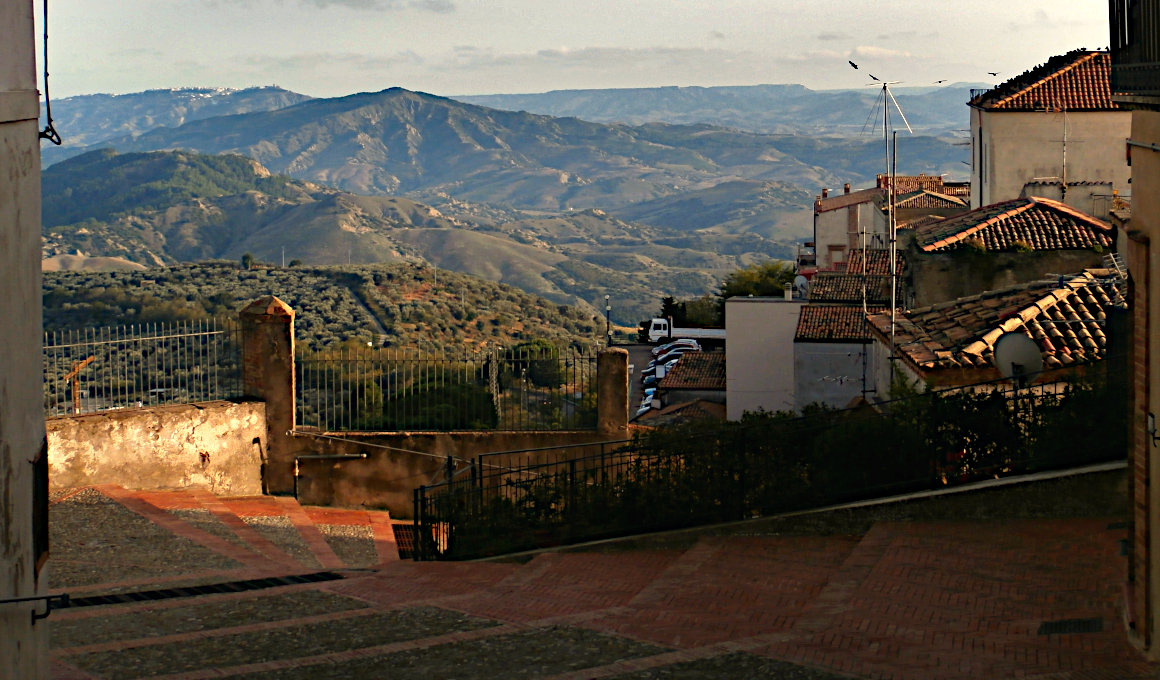
As I reached the bottom step a smiling lady of about my own age addressed me. She had no English, and my Italian is almost non-existent. We both carried sticks, and waved them in greeting. We got along just fine, and appeared to understand each other perfectly. We puffed our lips out and waved our hands in front of our faces to indicate the tiring effect of the heat, etc.
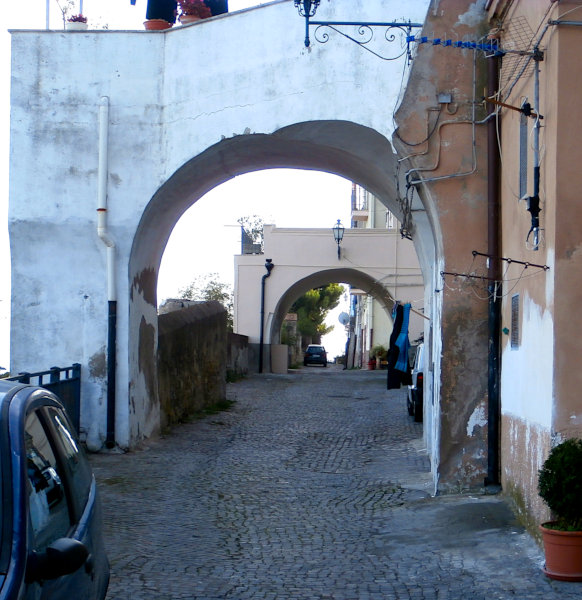
I found this connection delightful, and Graham was vastly amused.
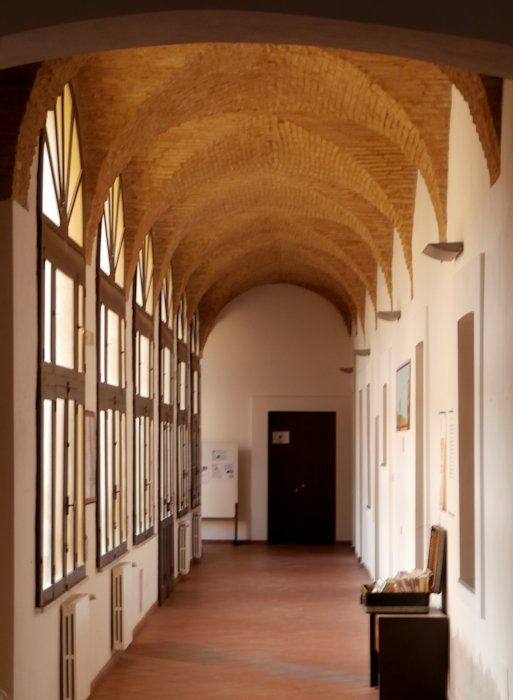
While I was negotiating the steps down to the wall Graham had moved further round on the other side. Soon he was peering round a large, open doorway. The dignity and beauty of the courtyard drew him in, and he found that he was within the confines of a convent. He could not resist taking a photo of this corridor, viewed through another, open door. We now know that this building has been turned into an hotel, so he was not such a trespasser after all!
FERRANDINA CONVENT – TAKEN FROM OLD NOTES
We do not know if the contents of the building are still as described in these old notes:
The monastic complex of Santa Chiara dates back to 1688. It is an imposing building in which there is a tower that dominates the entire city. Inside, in addition to a Crucifixion by Pietro Antonio Ferro, there is a painting depicting the Immaculate attributed to Francesco Solimena, dating back to around 1730, is of great value. The monastic complex of San Domenico dates back to 1517 and was restored in Baroque style, and completed in 1760. Paintings from the Neapolitan school, a seventeenth-century organ and a high altar with polychrome marbles.
FERRANDINA – DIFFERENT OUTLOOKS
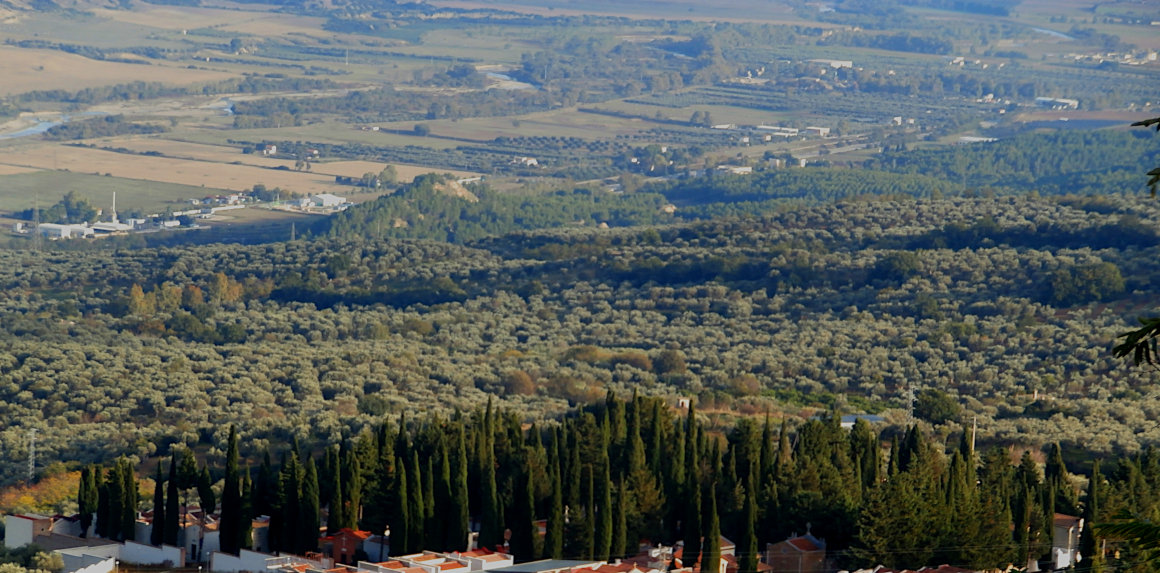
The views varied on each side of the wall. From one we looked out on flattish cultivated fields. From the other there stretched a panorama of greyish-white clay hills with only small occasional tufts of grass – exactly the barren landscape described by Carlo Levi.
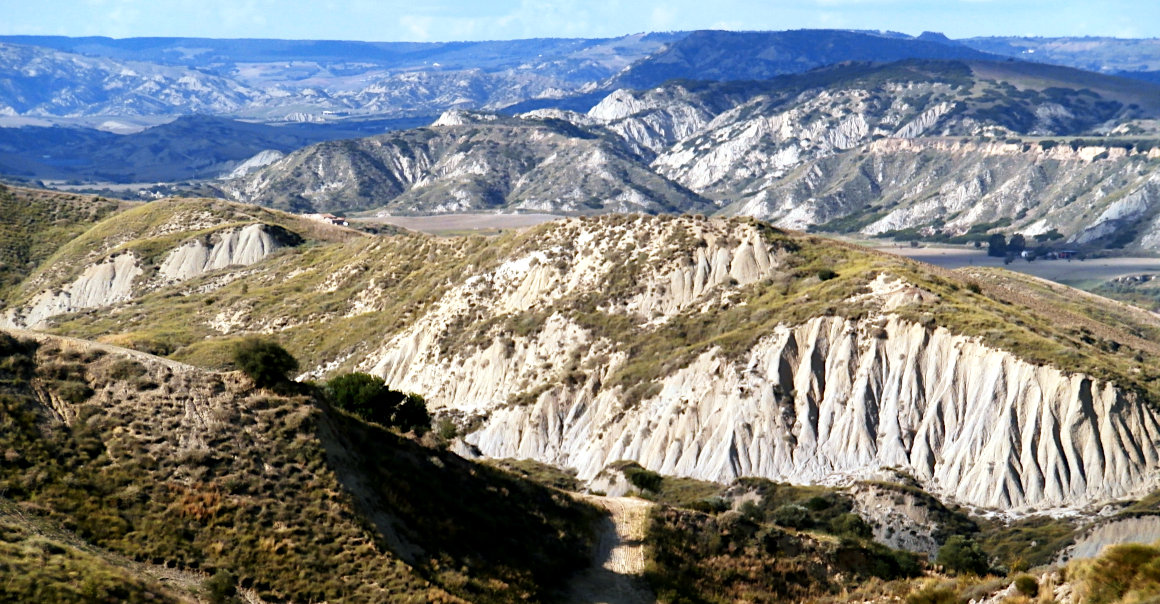
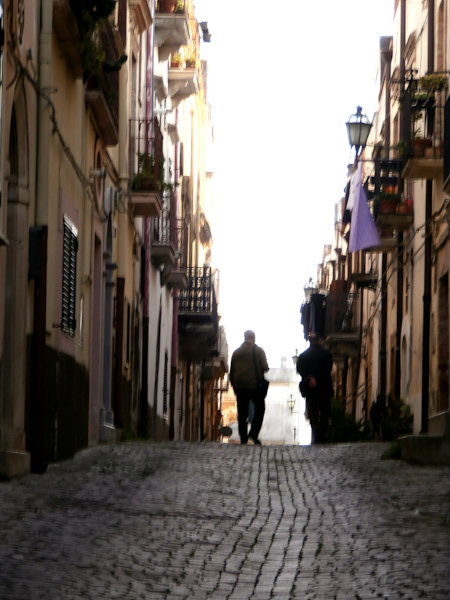
There was a nice, very small park on our way down. It was in grassed terraces, and had many seats looking out upon the open view. Trees crowned it. I wondered if it might be a remnant of the bandits’ forest? We never found the castle itself, although we saw it from the road. We were probably right behind it when we had to turn back along that ‘promenade’ walk.
FERRANDINA – FAREWELL WITH KAFFÉ AND CAKES
Before walking back down to our car we went back to the gelato and each had a kaffé and cakes. The owner was very chatty and informative about the colourful history of his town. His English was perfect. He’d worked for many years in Britain. He said he had loved it in our country and had only come back to take over the running of the family business. Apart from the suspicious old ladies, everybody we met had been very friendly and greeted us. We felt we would like to return to explore a bit more.
FERRANDINA – A POTTED HISTORY:
The early chapters of Ferrandina’s history are thanks to archaeological findings, and historical evidence discovered in the old centre. Written testimony dates back to around 1029.
Ferrandina’s origins are extremely ancient. Its dominating position favoured human settlements since the Iron Age. (Ancient discoveries were found under the city). 1,000 years before Christ a community from Magna Grecia named this hilltop settlement Troilia, in honour of legendary Troy.
Nearby, another village was founded, constructed around the castle of Obelanum: (Uggiano). Both towns reflected Greek culture. During the Byzantine period Troila underwent considerable development, becoming important. The Byzantine rulers weakened, and new conquerors arrived in the south of Italy. First the Lombards, then the Normans.
In the 1400’s a violent earthquake destroyed the villages around. Frederick of Aragon had a new city built with the help of refugees from nearby Uggiano. They transferred here and named it Ferrandina, (probably in honour of the son of King Ferrante I and Frederick of Aragon’s brother, Ferrandino, who died very young). Frederick of Aragon built a defensive system of walls and watchtowers; also a castle. He laid the foundation stone of the mother church, dedicated to Santa Maria della Croce.
The 1500’s brought economic growth through agriculture, sheep farming and the ever-increasing demand for “Ferlandina”, a high quality fabric produced by the women of the city. The largest purchases of Ferlandina were by Dominican monks who settled here, dug a well, and organized an urban centre and a church dome dedicated to San Domenico.
Later, Ferrandina suffered a long period of social struggle and uprisings. The well-known independent spirit of the inhabitants became very evident. Citizens of Ferrandina still proudly display the same fierce resistance to interference to their way of doing things!
During the Risorgimento Ferrandina took a liberal stance and actively participated in the revolts of 1821 and 1860. After the Unity of Italy, there were military clashes between the “briganti” (local rebels) and forces from Piedmont representing the King. In fact, it was here that the infamous “brigand” Carmine Crocco defeated an entire company of the Savoy army.
The advent of Fascism brought about one of Ferrandina’s darkest periods. The population had never approved of Mussolini’s operations or his regime, which made the town a target for his hit squads, eventually leading to the assassination of the mayor, Nicolo Montefinese.
In 1943, toward the end of WW2, the people of Ferrandina rose up once more against Fascism. The protests grew more heated and bitter after the 2nd of August, 1945, when they began forcefully demanding the exile of the Fascist landowners and the restitution of the land they had seized. The government feared this spirit of rebellion would spread to other towns. Ferrandina was put into lockdown, left for days without electricity or telephone lines. The situation slowly normalized when the provisional anti-Fascist government sent a garrison of the police, followed by a visit from the acting Minister, Scelba.
In 2003, a new spirit of protest ignited the inhabitants of Serrandina, who did not hesitate to take to the streets to demonstrate against the construction of a toxic/nuclear waste collection center in the nearby municipality of Scanzano Jonico.
The Church of Santa Maria della Croce:
In 1491, Frederick of Aragon laid the foundation stone for the mother church in Ferrandina, which is all we know about its construction. The stark façade has almost no decoration. Only three rose windows and three portals; the centre one has two carved stone columns. The interior of the church dates back to the 1700’s, but echoes earlier Baroque style. The central altar is a masterpiece of multi-coloured inlaid marble, creating a play of colour and light. Behind the apse, hidden from curious eyes, there is a hand-carved wooden choir, a pipe organ and two statues carved in wood, of Frederick of Aragon and his wife Isabella del Balzo. The mother church of Ferrandina holds two great treasures, one inside the other. The first;a stauroteca bearing the oldest stamp of the goldsmith’s art in Naples, dating back to 15c. The second, the holy relic it jealously guards: sacred slivers of wood ‘from the Holy Cross of Christ,’ to whom the church is dedicated. Every 14th September Ferrandina holds celebrations in honour of this holy relic.
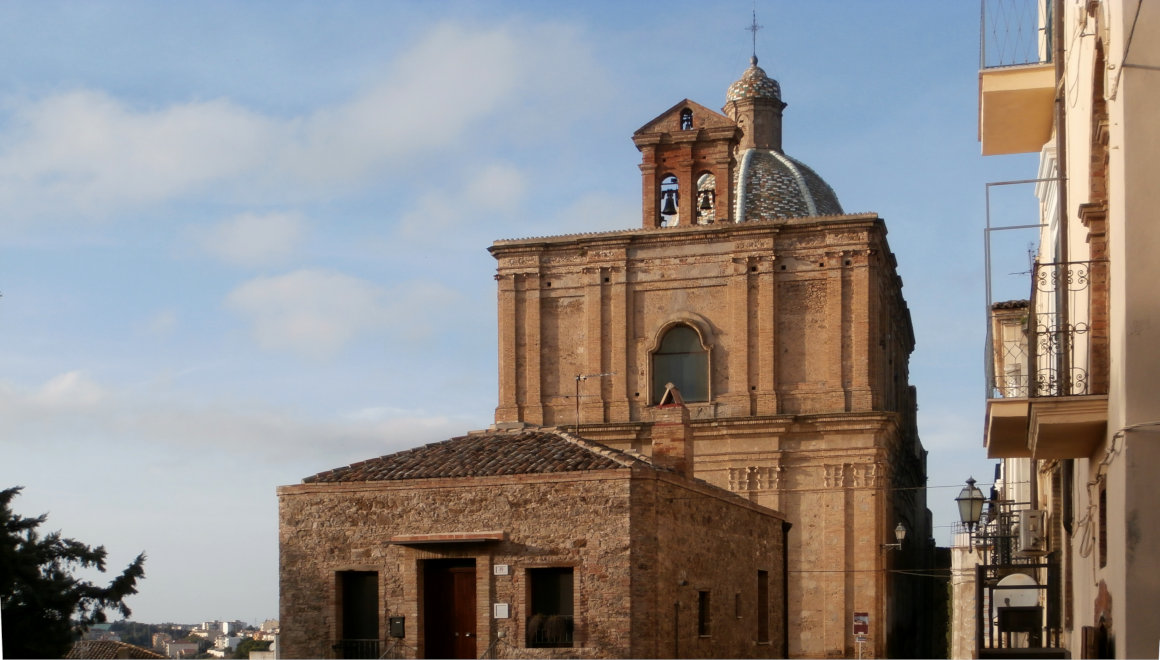
Text by – Jackie Usher, SWWJ. (aka author Debbie Darkin, & ‘Graham Liverpool’ on Trip Advisor.)
Photographs by – Graham Usher.
![]()

